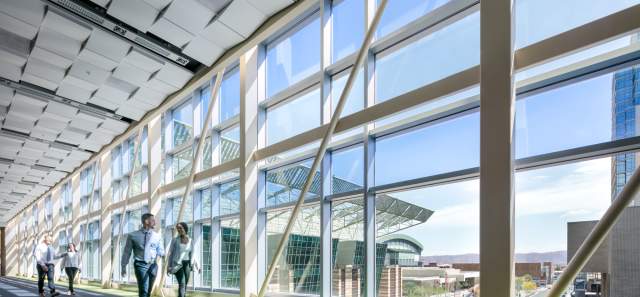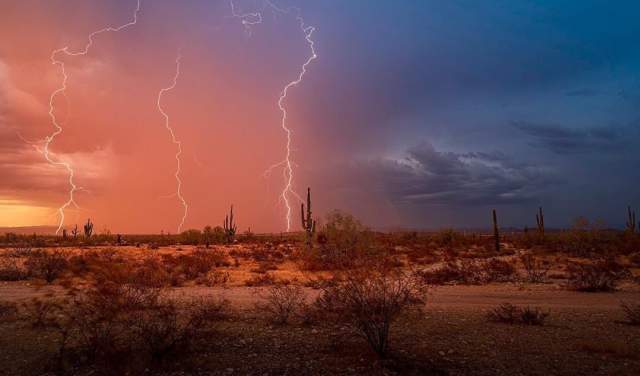The Best Ways to Experience a Monsoon in Phoenix
If you've spent any time in Greater Phoenix during the summer, you've probably been in the presence of our famous monsoons — a quick and intense storm full of rain or dust. In the United States, these storms are unique to the Southwest, and they're a sight most locals are more than excited to experience. Of course, monsoons can be dangerous, but if you follow these safety tips, you can enjoy the storm from the comfort of the indoors. Learn more about the dangers of monsoon season and how to keep yourself safe here.
What is a Monsoon?
Derived from the Arabic word "mausim," which means "season," a monsoon refers to the time of year when there is an increase of moisture and seasonal change in wind in the Southwestern U.S. In Arizona, monsoon season lasts from June to September. When locals talk about monsoons, they're usually talking about the short and fierce rainstorms that occur during this season.
Unlike many other destinations in the country, Phoenix locals love the rain — but we don't always get it (Phoenix has an average rainfall of nine inches per year, compared to a national average of 38 inches). Instead of rain, another common storm that occurs during monsoon season is a dust storm, commonly known as a "haboob."
The storms can be hazardous at times, especially if you're driving around town.
Essential Monsoon Experiences
The Sights
Clear blue skies are common in Phoenix, and loved by locals and visitors alike. But there's just something about the giant gray clouds, and the way they loom over the Sonoran Desert, that makes our scenery look even more beautiful, especially when accompanied by a bright lightning strike. Whether out in the Phoenix Mountains Preserve or among the skyscrapers in downtown Phoenix, a dark and cloudy sky gives the city a special feeling. Even the sight of a haboob forming, with a massive dust cloud ready to overtake the city, is amazing to see — from a distance of course.
The Smell
While locals love to see rain, the best part about storms in Arizona is the smell, which can be described as sweet, pleasant aroma. This smell is thanks to the creosote bush, a plant native to the American Southwest and northern Mexico. The leaves of the creosote have a waxy coat, which helps to protect them from the sun's ultraviolet rays, and to conserve water. When that waxy substance gets wet, we get to waft in that sweet smell. The scent is so popular that some local shops like Phoenix General sell bushels of creosote to hang in the shower, so you can get that alluring rain smell all the time.
The Sounds
There's no denying that the sound of rain hitting against a rooftop or umbrella is incredibly soothing. The rhythm of the raindrops hitting a surface is said to create a "pink noise," similar to white noise, but more relaxing. It's a sound that could put us right to sleep easily, but don't forget about the clap of thunder to wake you up. Of course, you'll usually hear the thunder long before you hear any rain. We can only imagine what a monsoon storm sounds like inside Taliesin West, former winter home of architect Frank Lloyd Wright.
The Brevity
Rain storms are nice, but they can be tiresome if they last all day (or all week). Luckily, that's rarely the case in Phoenix. Storms during monsoon season are famous for being short and unpredictable, so we Phoenicians here try to treat it like a nice surprise. Even though monsoon season brings hot weather, the occasional rain storm helps to cool down the streets for a while, even if the rain is short-lived. So don't worry, your patio dining plans can likely stay on the agenda.
You Might Also Like
Things to Do When It's Raining
Don't let a little precipitation keep you cooped up on the couch all day. Check out these…
Top Phoenix Attractions
Serene desert gardens, one-of-a-kind museums, award-winning dining and more: Make sure these…






